by Tom Gaylord
Writing as B.B. Pelletier
This report covers:
- Trimming the neck
- Deburring the case neck
- Uniforming the case neck
- Primer pocket uniforming
- Straight-wall cases
- Tapered cases
- How to save time
- Mistakes
- Summary
First I want to thank everyone who is taking the design an airgun challenge seriously. We are seeing some thought put into your designs. And remember, the contest is still running until the end of the month. Now, on to today’s report.
This report on reloading is starting to attract some attention, as I hoped it would. Your comments have been instrumental in determining what I write about. I’ll start with a comment by reader Brent.
“So you don’t have to trim the neck with any tool separate than the Lee Loader? I guess the only other things I would need to get are a tumbler with some stainless steel pins and perhaps a scale if I wanted to experiment with powder charges. I do think you need to address leaving empty space in the case because that is a real no no with blackpowder because it tends to act as an explosive rather than a propellant then.”
I responded to him this way.
“Brent, The Lee Loader bypasses several steps that a careful reloader would do. Working on the case neck is one of them.”
Trimming the neck
When we talk about trimming a neck we are usually talking about a bottleneck cartridge, which is one with an angle from the shoulder to the smaller neck. The 5.56mm cartridge that’s used in the M16 rifle is such a cartridge.
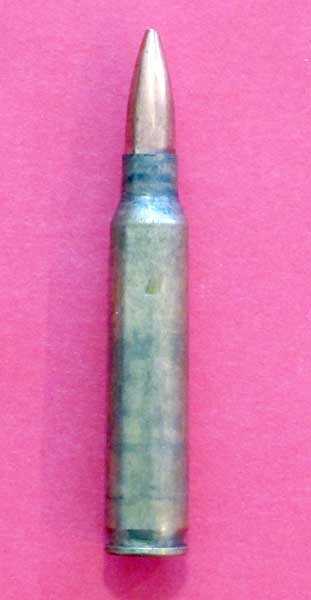
This 5.56mm is a typical bottlenecked rifle cartridge.
There are several things that can be trimmed. If the overall cartridge case length is too long, a case trimmer can cut it back to length. We have a maximum “trim to” length that we watch and do not exceed. A case can be trimmed with a file, but a case trimmer designed to trim is much better. Some cases stretch fast and must be trimmed after every three loadings. The Swedish Mauser 6.5X55mm cartridge is notorious for stretching. After the second trim the case should be discarded and not trimmed a third time. It develops a weak spot about two-thirds back of the shoulder and will separate when fired if continually loaded. So you get about 6 reloadings from such a case, and less if you shoot heavy loads.
Deburring the case neck
After trimming the case neck you have to remove the burrs on the inside and outside. That’s done with the deburring tool I showed you in Part 2
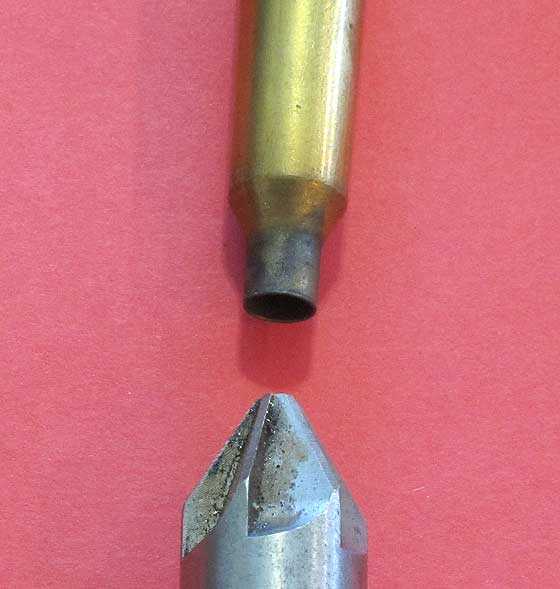
After trimming to length the deburring tool is used inside and outside of the case neck to remove any burrs that remain after trimming.
Uniforming the case neck
Back in the 1960s some reloaders of bottleneck cartridges started worrying about making the thickness of every cartridge case neck uniformly identical. They felt the cases would then exert a uniform hold on their bullets and that would improve accuracy. Tools were built to not only cut the thickness of the necks uniform, but to also spin the cartridge to ensure concentricity of the bullet to the cartridge case. This is still being discussed and even done by benchrest competitors with results that are difficult to prove. One camp holds that all this is anal and has little effect on accuracy — the other camp swears by it. I side with the guys who don’t uniform their case necks. I am not a world champion benchrest shooter but I do save countless hours of time while reloading.
Primer pocket uniforming
There is also a school of thought that says the primer pocket flashholes need to be uniformly sized and all burrs on the inside of the case around the holes that were punched through need to be removed. So they drill them all to a uniform size and them deburr them inside. I do not do this. At the end of this section I will tell you a little trick that gets around all this (possibly) useless work.
Straight-wall cases
Besides bottleneck cartridges there are also cartridges with straight walls. They are far more forgiving to reload. They don’t stretch much, but you still must measure their overall length. If they are rimless pistol cartridges, they stop in the chamber of the pistol on the mouth of the cartridge case. That is what determines the headspace of the cartridge and if the headspace isn’t right you can have a problem with exploding ammo. So the length of the case is important.
Rimmed cartridges like the .357 Magnum headspace on the rim. The neck of the cartridge gets folded over and crimped into a groove on the bullet to hold it tight when the pistol recoils. So case length is not as critical there.
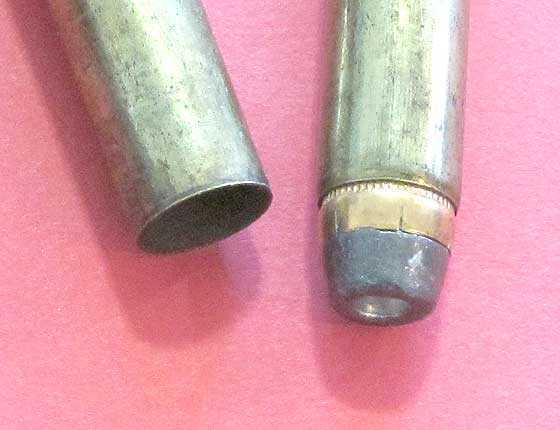
The neck of the .357 Magnum case is crimped into the side of the bullet to hold it tight during the recoil of the pistol when the others are fired.
These cases last much longer than bottleneck cases. I get over 10 reloadings of them, even when I load heavy. But eventually the case mouth will crack from being worked back and forth. When that happens, throw it away.
Tapered cases
Then there are a few cases that are neither straight, nor are they really bottlenecked. The .22 Hornet is an example of these. It has a gradual tapered shoulder that ends in an extra-long neck. You can argue that it’s a bottleneck, but it doesn’t act like one. It’s a rimmed cartridge, so it headspaces on the rim and not on the neck. This case is made of brass that is super-thin at the mouth of the neck and gets damaged very easily.
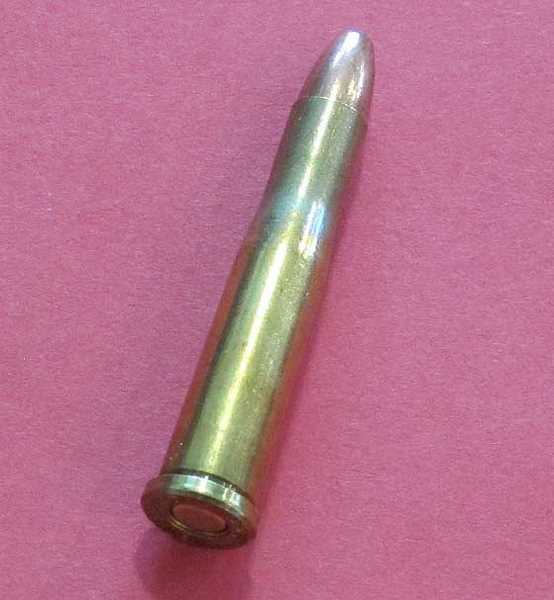
The .22 Hornet is an oddball case that doesn’t fit well into a category.
How to save time
Instead of doing all the tedious little things mentioned here, and other things besides, you can shoot groups of 10 shots, and, when a bullet strays outside of the main group, set that case aside and do not use it again. You end up with a set of cases that shot very well for whatever reason, and they will keep on doing the same, reload after reload.
Mistakes
When you reload you will make mistakes. Despite taking every care in the world, things won’t go right every time. You’ll load primers upside down or sideways, you’ll crush cases, you’ll strip bullets. You’ll load the wrong powder, making the cartridge dangerous.
For your mistakes you need an eraser! Reloaders call it a bullet puller and a kinetic puller like the one shown below is the easiest to use.
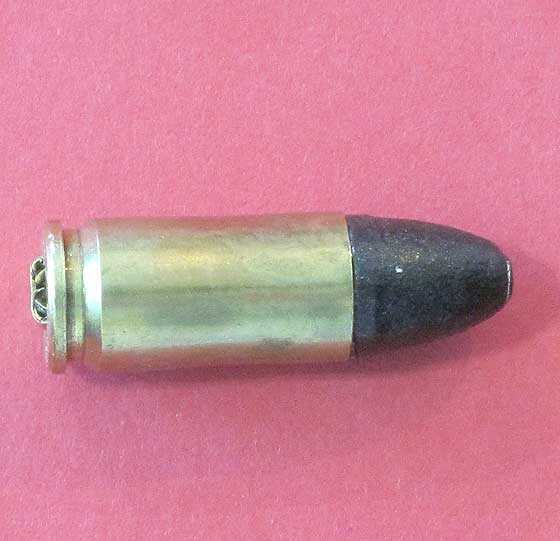
Oooops! The primer went in sideways and was crushed.
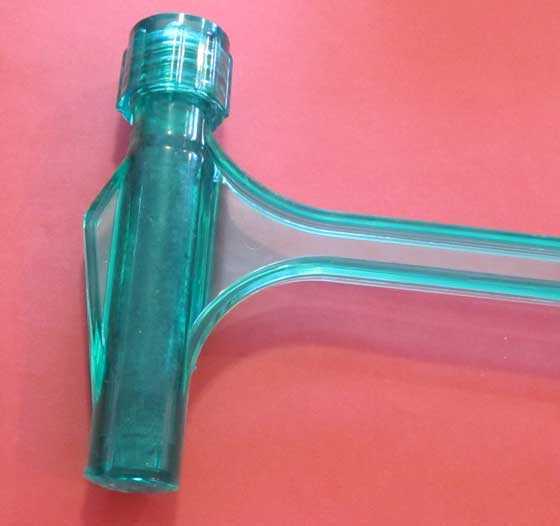
This bullet puller holds the base of the cartridge fast and is struck like a hammer on a hard surface, pulling the bullet by kinetic energy.
Summary
Phooey! Three reports already and we haven’t reloaded one cartridge yet. That’s coming soon!

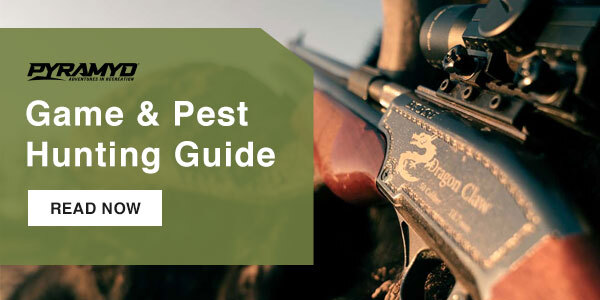
B.B.,
Didn’t know that there was a finite number of reloads that a bottle necked case can go through.
Siraniko
PS: Section Uniforming the case neck First paragraph Fifth sentence: “One cam (camp) holds that all this is anal and has little affect (effect) on accuracy — the other camp swears by it.”
Section How to save time First paragraph First sentence: “Instead of doing all the tedious little things mentioned here, and other things besides, you can shoot groups of 10 shots, and, when a bullet strays outsider (outside) of the main group, set that case aside and do not use it again.
Siraniko,
Fixed them. Thank you!
BB
I’ll soon be 67. By the time I was 14, I could take my Tradewinds/Husquavavarna .243 boot action rifle, and my own hand loaded ammunition to the range, and, on a recent day, shoot fine sized groups off the bench at 100 yards. My dad got me there. He was very much safety first when it came to firesrms, shooting, and hand loading. And, the band loads mentioned really were hand loaded. Using an ancient Lyman 310 gong tool, and a powder trickled directly onto a powder scale.
To this day, I have never used a multi-stage press. I don’t trust them. I use a Lee hand press, and it works great. I wore one out my first one after many thousands of rounds. The early ones where the threaded part is that you screw the dies into, those breads were alumni um. The newer models have a threaded steel sleeve that the dies screw into. I reloaded .243, .270_ .222, .22 Hornet, 30-30,32 H&R Msgnum, .32 Long, .38 Special, .357 Magnum, .357 Maximum, 7in TCU, .45 ACP, 32-20, .44 Msgnum, .44 Special, .45 Long Colt, and maybe a few I forgot. For years I competed in IHMSA 200 meter handgun matches, NRA Hunter Pistol matches, and some bowling pin matches. I reloaded for a friend who also competed I these, and he didn’t reload. I found reloading very relaxing, and enjoyed experimenting with hand loads to find that best one. For IHMSA you had to have the right amount of accuracy and power. The 200 meter (220 yards) ram target weighed from 50-60 pounds, and you had to topple all targets over to get a point. While a 30-30 may not BE a powerhouse, in a ten inch Contender it’s very effective. I had a great hand load for it, and shot in matches up to four times a month. In all the shooting I did, including the loads for my friend, there was never a missfire, over charge, empty casing or anything. Since moving to Hawaii in 2011, I haven’t fired a centerfire of rimfire gun, as there is about no place to shoot on the big island. Hence, I shoot my Wiggins a lot here at n my acre.
Just like anything technical, you must first understand what tools you need, and how to use them before you can use them effectively.
Ian..
This one needs to be corrected.
Trimmed.
Ian,
Got it. Thanks!
BB
Maybe a steel alloy cylinder could be built in the buttstock. A small burning candle could be put into it and then it could be sealed. The candle will burn until the oxygen in the cylinder depletes. That might create enough pressure for a single shot.
https://www.youtube.com/watch?v=0DKWSXstXuc
+
https://www.youtube.com/watch?v=GpCr1F0LIdk
Candle is gonna burn behind a sealed pellet in the barrel until it depletes the oxygen. After the vacuum occurs, it’ll be ready to shoot. Trigger is gonna open the back of the barrel and let the air in.
Or something like this could be build into the buttstock.
https://www.youtube.com/watch?v=M89MIJiWljo
Steam,
That is pretty cool (an actual coal fired steam train engine, on model scale, 24″ long?). I am not going to build anything, but if I did, it would be a glorified, steam powered potato gun.
Metal, sealed water chamber w/fill cap for filling,………… in line with
Metal burst disc holder/fitting (can probably buy the fitting and disc),………… in line with
PVC barrel (or heck,.. even metal pipe)
You can add a pressure gauge in the tank for data collection
A 2″ diameter, 8″ long metal pipe with 8 oz. of water should be more than sufficient
A propane torch directly to water tank for heat. Light torch and move back
Vary burst disc strength based on performance,.. start on the weak end of rating/burst
Use pipe straps to mount “gun” to a board,.. sitting on saw horses
Not a gun as in the shouldered sense, but a gun none the less. It would work.
Chris
Steam,
Forget your nom de plume. Some have difficulty putting a vessel filled with high pressure air next to their face. Who wants to get scalded while they are at it?
B.B.
What is a “Hot Shot”?
How often can the same cartridge be reloaded?
-Y
Yogi,
I don’t know. What is a “Hot Shot”?
The number of times a cartridge can be reloaded is variable. I’ve given some of the reasons in this report. I will give more as we go.
BB
‘Hot Shot’ is a brand name of an electric cattle prod.
Paco,
Okay — but what does that have to do with reloading firearm cartridges?
BB
BB, The “Thutty Thutty” comes to mind as well?
R
Nothing that I know of. Why did Yogi introduce it to the conversation?
Yogi,
Could it just be a reference to an oversized load of powder? Is it capitalized in the context where you saw it used?
Half
BB,
I would consider the .303 British a tapered cartridge. If you want to go to extremes there is the 8mm Label.
We were fortunate to not have any casings separate at the neck, but we have had them split.
Military brass tends to be heavier, thicker walled. It is harder to work with because of this, but it will often last longer, most especially since most reload for accuracy versus maximum power. As most of our rifles were bolt action, we would only size and trim the necks. That saved a lot of time and wear and tear on the equipment and the casings.
I remember way back when you were testing your .22 Hornet and the results were really not that great. I was wondering if you had experimented with other loads since then to see if you could “tune” it.
BB,
I have not read all of the postings yet, but has anyone thought of building a bellows gun?
RR,
Good idea and thinking outside the box. Bench mounted and burst disc fired. The bellows would be the weak link,… as it would have a propensity to “balloon” out under high-ish pressure. It would be ok for something like a cork gun platform and skip the burst disc.
If you have a bellows for your fire place,…. get a piece of pipe and a cork and give it a go! 🙂
Chris
Chris,
The bellows gun works similar to a multi-pump with a small bellows built into the stock. When you pump it, the bellows opens a valve and fills a plenum. You pump until you cannot do so anymore, take aim, pull the trigger to release the exhaust valve and your projectile goes hurling through the air towards your intended target. Or something like that anyway.
BB,
All very interesting. I do wonder though,… with a (new) box of cartridges,.. it is easy to keep track of the number of re-loads,… somewhat I suppose,.. depending on tracing method.
However,…. how do you safely gauge brass that you pick up at the range (like many here have done, per comments)? You really have no idea how many times they have been reloaded (or over loaded/abused), and so on.
Determining case length seems simple enough. Trimming to length seems simple enough. BUT,… how do you determine the (thickness of metal at the neck) of a necked case???
Also,.. if the cartridge is tight in the chamber (encased by the breech) when fired,… where does the stretch occur? How (can) it occur,.. if contained/confined? What keeps it from blowing/expanding itself tight to the chamber and getting stuck?
Finally,… what is the easiest way to keep track of the # of times reloaded? Separate each batch/box with a note made? Mark each case? Etc..
Chris
Chris,
Good questions.
-Y
Yogi,
Just approaching it from a curious Newbie standpoint,.. like BB did with learning to shave with a straight razor (and) learning to sharpen a straight razor.
Chris
Chris,
All you can do is watch those cartridge cases for signs of failure.
BB
The eye test helps. Stretch rings near the base may be okay but avoid brass with obvious bulges. BB will get into this no doubt.
Deck
Whenever they’re allowed to, reloaders pick up their own brass. Brass left at the range has typically only been fired once.
It is the chamber of a firearm that contains the force of firing a cartridge. The cartridge itself contributes little or nothing to containing that force. As cartridges are reloaded successively, they all experience some form of structural failure, typically a crack in the neck. At the 1st sign of failure they are discarded.
As a cartridge is fired, the case expands and stretches, much as a balloon would, to entirely fill the chamber of the firearm. Immediately after firing, the case rebounds back (shrinks) about a 1000th of an inch and that explains why cases can be easily extracted from the chamber after firing.
The now stretched out case is forced back into its original shape and size by forcing it into a re-sizing die. This resizing process forces some of the brass from the body of the case to flow into the neck of the case causing it to lengthen or grow. This growth must be trimmed periodically to keep the cartridge within safe specs.
Due to the reloading process, every cartridge eventually wears out and shows sign of failure. However, if a cartridge shows any sign of failure upon the 1st reloading it’s a danger sign of an overpressure situation due to too much gunpowder. There is a process to work up to a safe maximum load that I’m sure Tom will be covering in the future.
Neck wall thickness can be measured with a simple set of calipers, or you can purchase dedicated tools that measure the consistency of the neck wall around its entire circumference in a second.
Glenn,
Thank you very much for that reply. Very clear. Hopefully BB will be covering some of that in upcoming articles.
Chris
Chris, a lot of keeping track of the count is determined by a couple of things, the volume of rounds you reload at any given time, and your expectations of accuracy at the distances you will be shooting.
In 3 gun competition you shoot hundreds of rounds a week.
And at relatively short ranges for a rifle.
You will probably be using a progressive press, that throws the powder charge by volume.
So, the ammo has to be safe, and reasonably accurate, as you are shooting for speed, at a relatively large target.. While prepping the cases, you inspect them for signs of fatigue, and pull suspect cases, as you are seating the projectiles, you will FEEL any cases that are slightly long as they will be a little harder to crimp the projectile in place (Using either a roll crimp, or taper crimp.) so you can pull them out of the loading process at this time.
That being said, I would inspect the condition of the cases before they would go into the tumbler, again as I was taking them out of the media, again as I would put them on the progressive press, and again after loading them.
If you are loading for accuracy above all else, you will be loading on a single stage, and prepping each case carefully, and weighing each charge carefully.
They make case length dies you can seat the cases into each, and feel if the case extends above the die, and hit it with a pass with a file.
Or you can use a micrometer to check the length of each cartridge.
And trim each case to the same length using an adjustable case length trimmer.
And probably keeping more meticulous records than a high volume shooter.
So keeping track of the number of times a case has been reloaded is easier to keep track of if you are a low volume shooter.
Safety is the priority, remember, you have 50,000 psi going off 4 inches from your face.
Double check everything.
45Bravo,
Thank you for the additional insight. Like anything that can be potentially dangerous,… safety, safety, safety.
Chris
More robust (thicker) cases would seem to solve more than a few reloading problems and make things easier. If the internal case capacity is significantly reduced,… use a “hotter” powder,.. to compensate for the previous more powder that is weaker.
Makes sense to a newbie like me,…… 😉 🙁 ?
Chris
Chris,
So close, but no cigar. Do NOT use a “hotter” powder when the case capacity is reduced. That leads to a dangerous pressure situation. I will say more in my next report.
B.B.
Chris,
As I mentioned above, military brass is usually thicker. Your idea of a “hotter” powder though sends shivers of the spine of any reloader. You CAN do such, but you had better reduce your load considerably. You do not want your rifle to turn into a grenade.
The idea is to have all of your powder burned before the projectile exits the barrel. With a short barrel you would use a faster burning powder, but a smaller load. A long barrel gives you more time to accelerate your projectile, Therefore you can use a slower burning powder and often more of it.
There is a whole bunch of stuff that goes into figuring this out and you had better have a clue to what you are doing. Fortunately there are many guides to help you.
Speaking of overpressure, a nasty little trick that was used over in SE Asia on occasion was to pull a bullet and fill it with C4 and then load it into a magazine a couple of rounds down and drop it somewhere. Everybody learned pretty quickly not to use “strange” ammunition. Ammo from “trusted” sources was not always safe.
BB,
The cartridge in the first picture looks to have a “step” at the top of the neck (bullet to case interface). Is this an example of the neck/mouth not being trimmed prior to reloading?
Chris
Chris,
No. All cartridges have that step. Some — like semiautomatic pistol cartridges — use that step to headspace the cartridge in the firearem.
BB
BB,
Not sure we are seeing the same thing. I am (not) talking about the step from case to bullet (case thickness at bullet entry point). I am talking about the lip of (that) cartridge. Bullet removed, there is still a stair step on the rim of (that) case,… or so it appears.
Chris
Chris USA,
See my comment to B.B. below:. I don’t think Tom would have used an image of a cartridge with a poorly trimmed case mouth. Unless he was pointing out a bad practice.
In the worl of reloading my opinion is that folks follow trends and successful shooters Mumbo-jumbo just like in any other Sport or endeavor. Of course then their are the Shooting Writers who work for $$$ and are swayed by who funds their meal tickets….
shootski (currently fully Retired beholden to No One!)
Chris,
I fianally saw it. It’s just an artifact.
BB
BB,
I learned something new,… I think,…?
I thought that an “artifact” was something old, or dug up. Dictionary says: any object made by human work
Just below,… “artifice”,… 1) Skill or ingenuity 2) Trickery 3) An artful trick
Since this case is trimmed neat,.. this looks to be photographic trickery
Either way,… you solved the mystery.
Chris
Chris USA,
Fossil and antiques are the things you thought were ancient artifacts.
The fossil are not man made the antiquities are of the man made variety.
It all old stuff to me….
shootski = fossil
Shootski,
I did Google it and it is indeed “artifacts”. I would not,.. never did,… consider fossils artifacts.
While I would consider old, dug up pottery and such to be artifacts,.. the definition above would lend itself to modern day man made items as well.
It is nice to learn something new like that. The word does indeed have several definitions,… albeit maybe modern day applied ones. It is an (very) odd choice of word to define such.
Chris = working on catching up with you 😉
Chris USA,
I learned that word in training for Electronic Warfare (EW) stuff on cathode ray screens (like old time TV screens) before they went digital/flatscreen. Although artifacts also describe things that are not of the real scanned image. In EW you better know artifacts from missiles, aircraft, bombs, or canon rounds or you be in big trouble.
shootsk = Cold War artifact
Shootski,
2 c,… fits pretty well:
https://www.merriam-webster.com/dictionary/artifact
Chris
B.B.,
In the 1st image of a loaded 5.56mm cartridge it looks like the case mouth was not trimmed all the way around; I think it is a digital image (hick up) artifact.
shootski
shootski,
Yes, that’s an artifact. The case mouth is trimmed uniformly.
BB
B.B.,
Thank you for sharing your reloading experience and knowledge. I have never reloaded cartridges, only shotgun shells. I have shot some center fire pistols and rifles, but have never actually owned one myself. I do enjoy reading the blog regarding this topic though. I do know that one should always stick to the recipe for components. There was a very smart engineer at work that tried experimenting with powders and charges. He blew up a nice rifle, luckily he was not injured. Reloading can be dangerous if things are not done correctly, or one thinks he knows better how to reload using a different recipe. I would stay away from those fellows. 😉
Geo
BB,
Will you be addressing — I think this is the term — “fire forming” cartridge cases?
Half